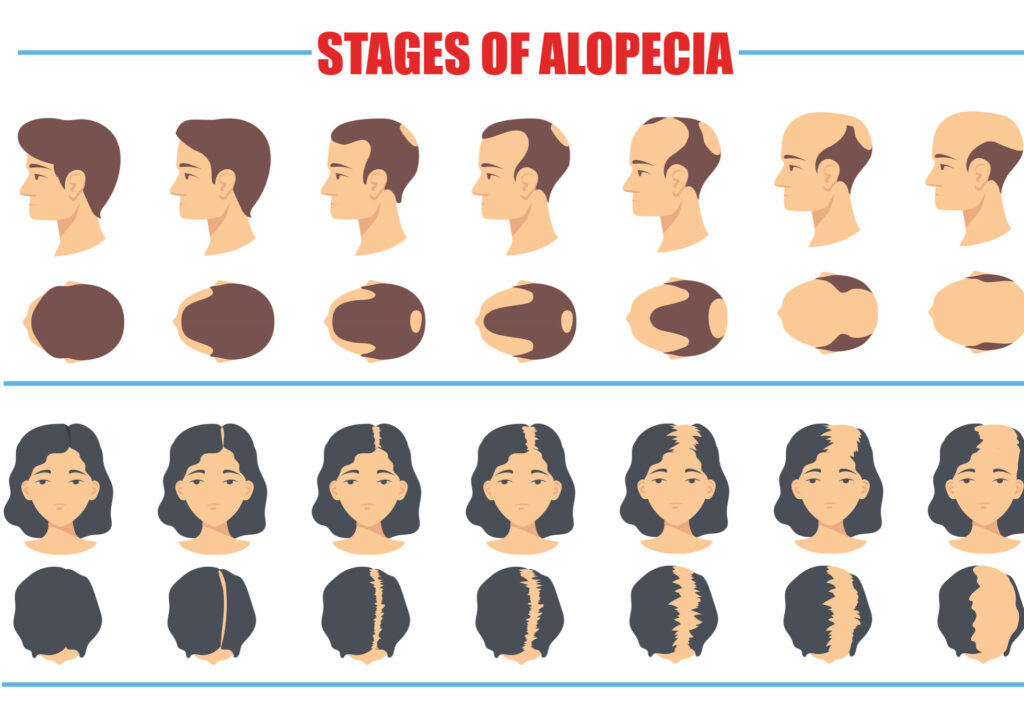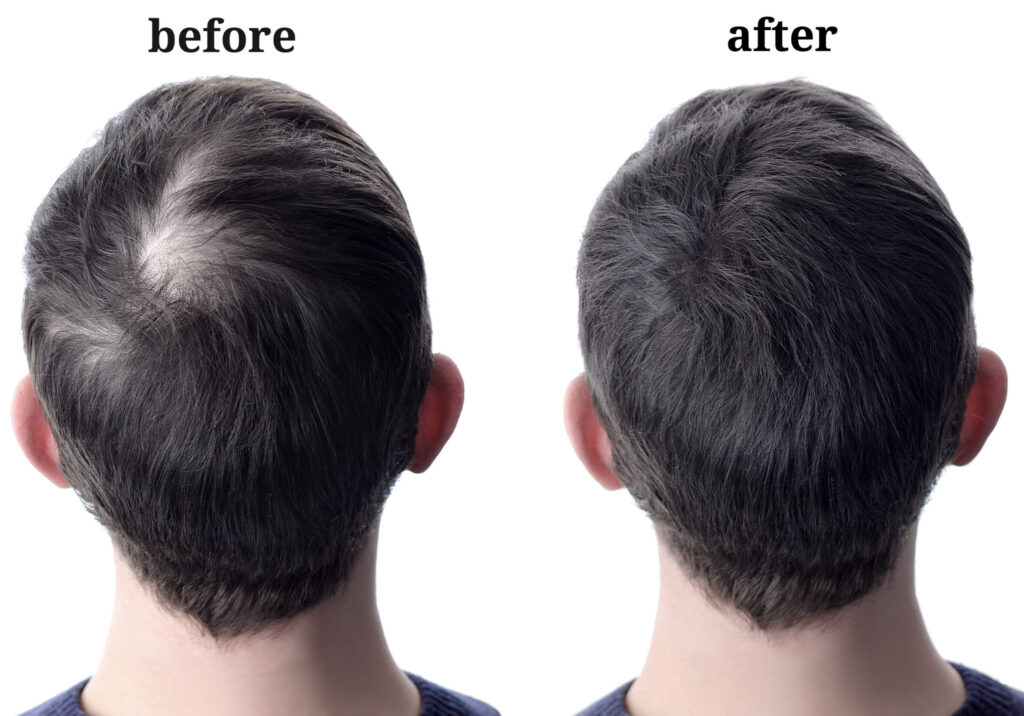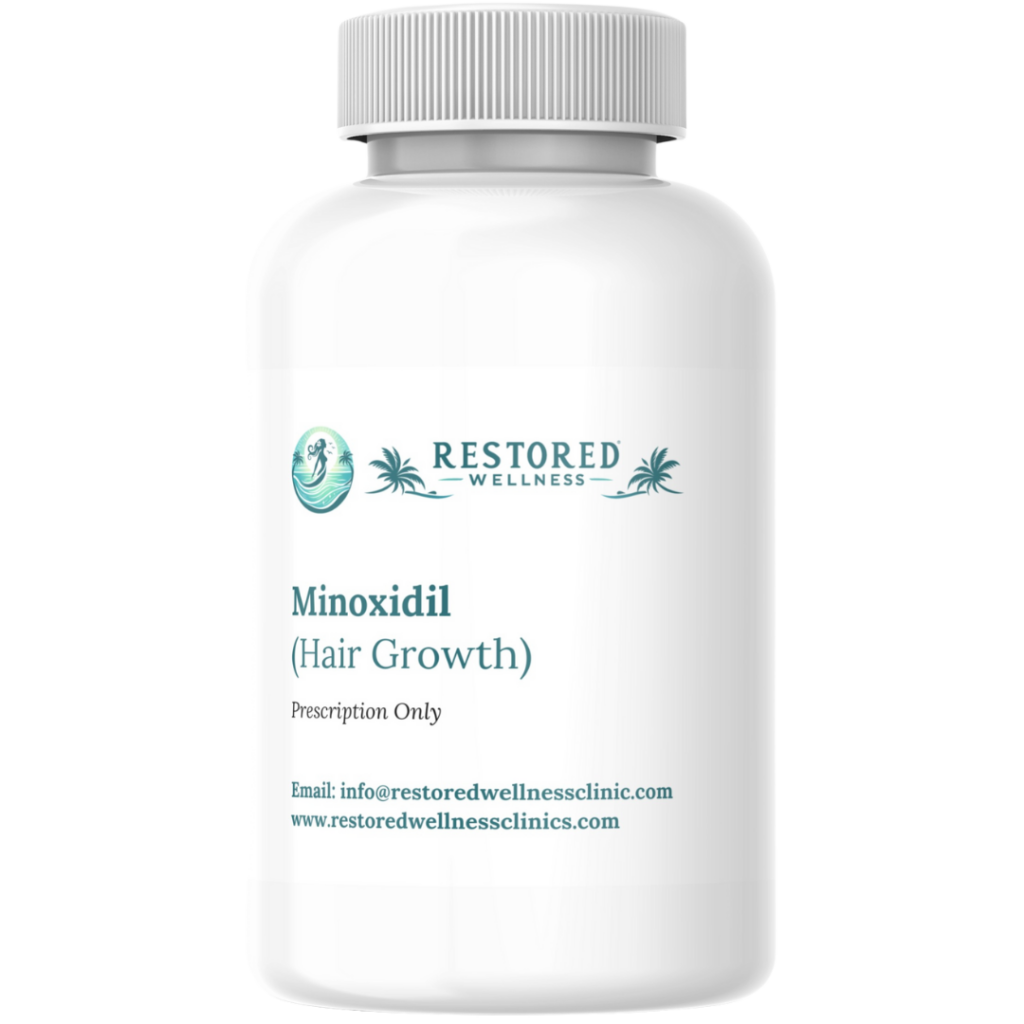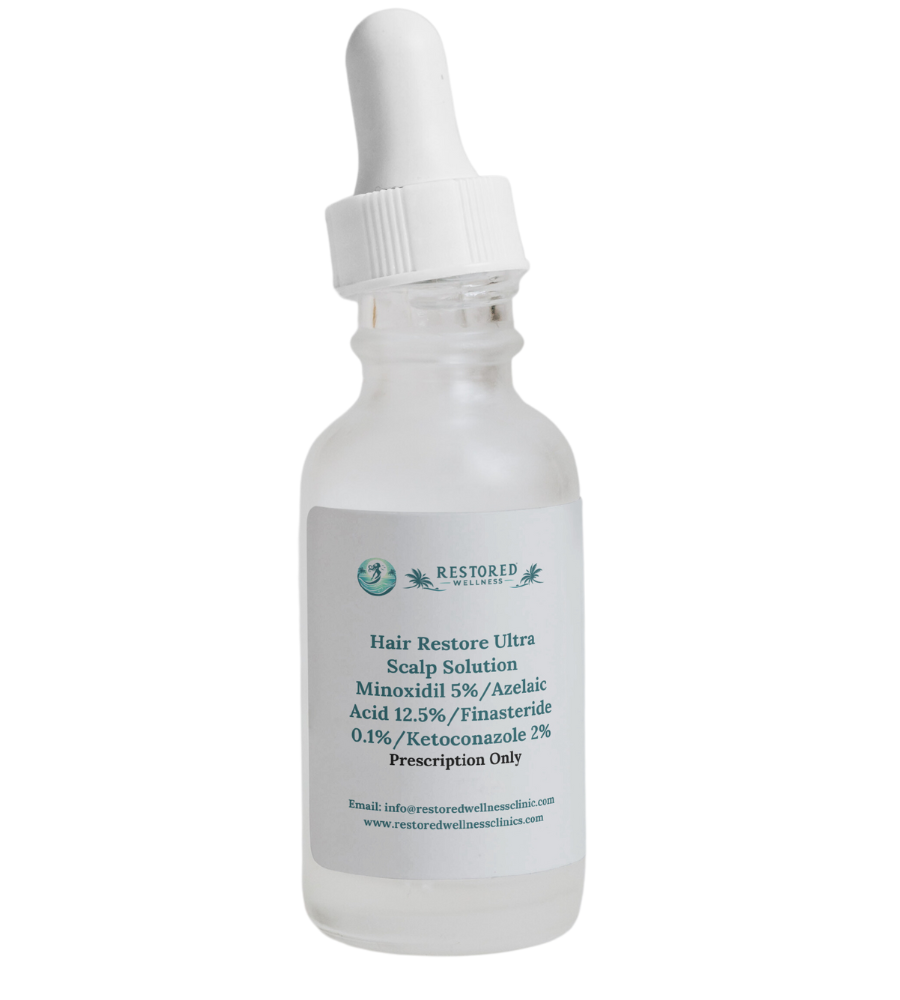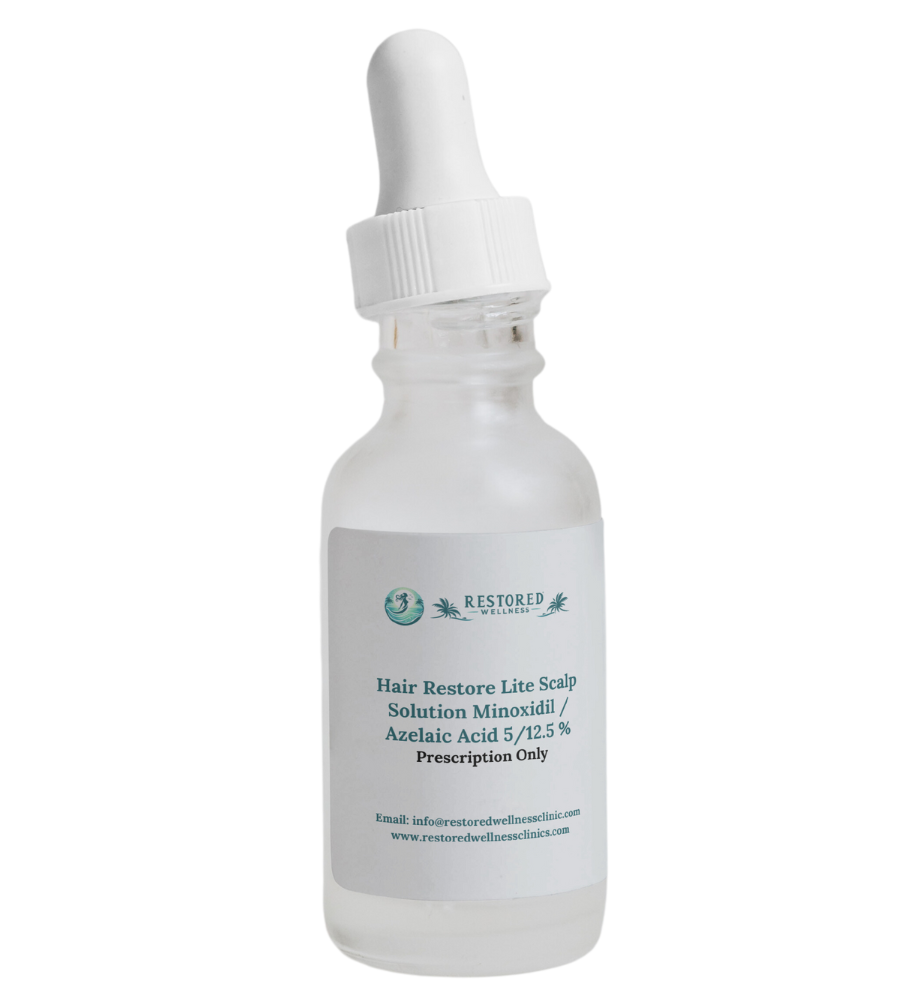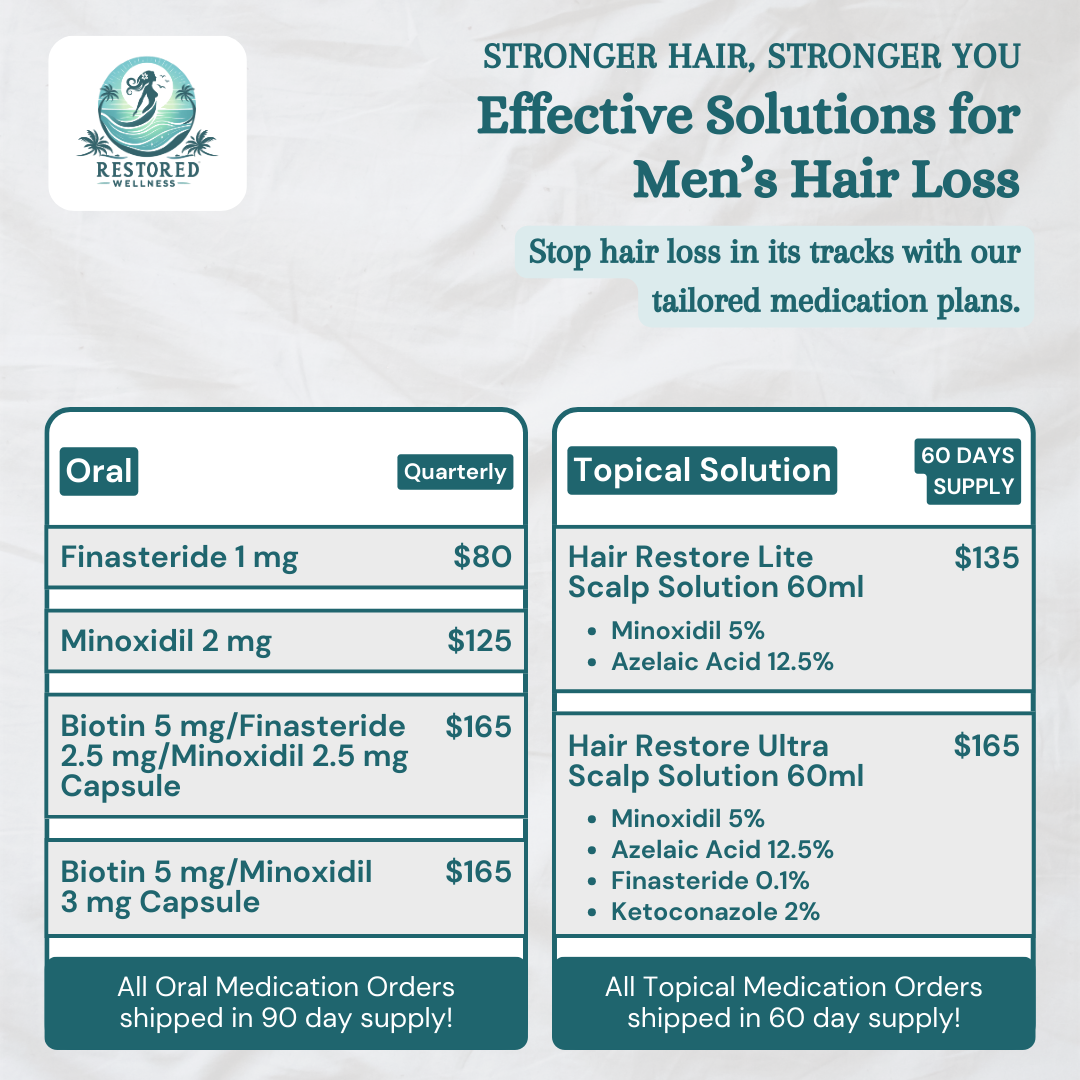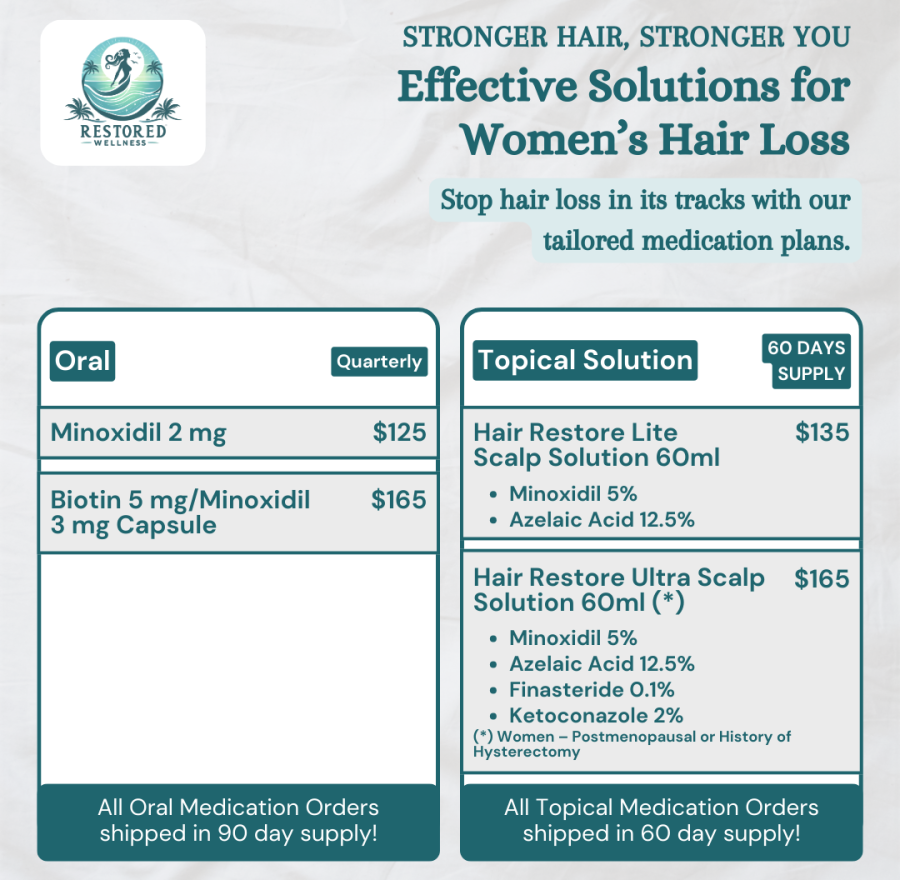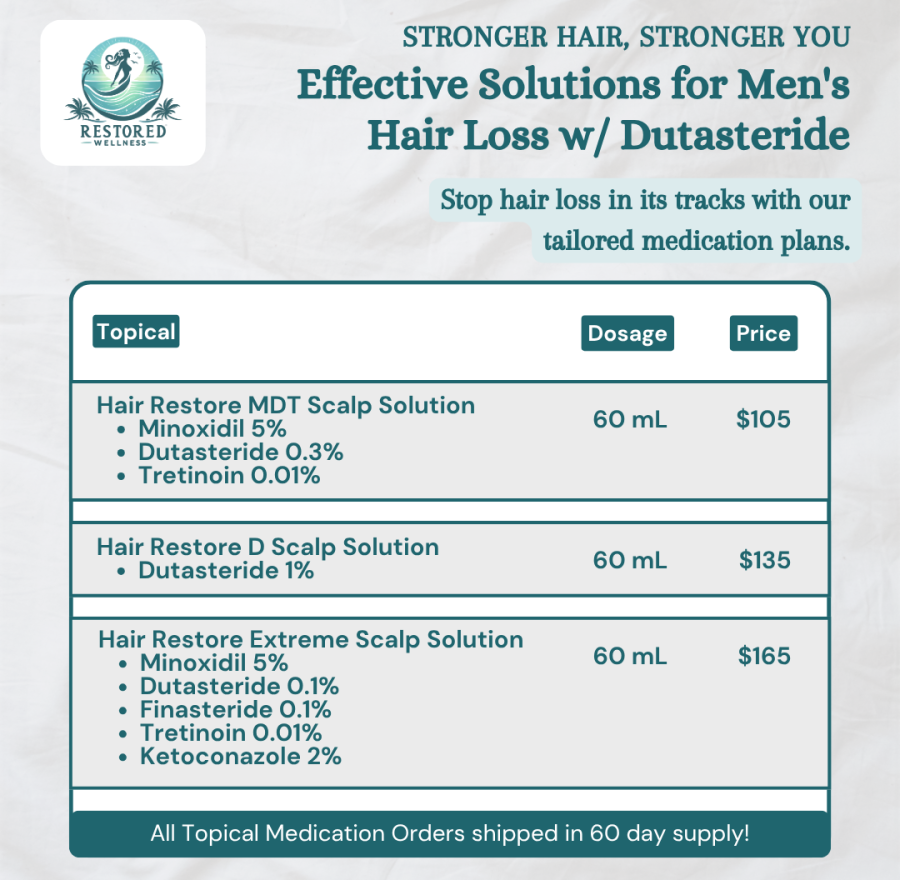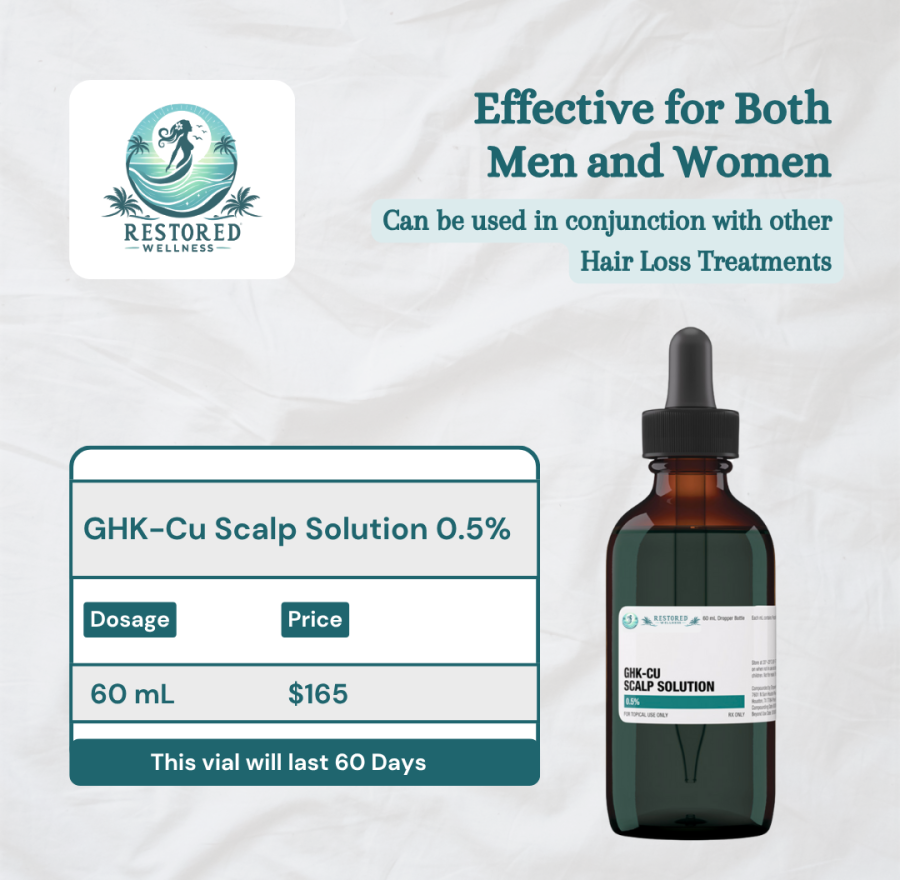HAIR LOSS
HOME – SERVICES

Hair Loss Treatment
Androgenic alopecia, commonly known as male or female pattern baldness, is the most common type of hair loss in both men and women. It is primarily genetic and hormone-related, caused by the effects of androgens (male hormones) on hair follicles.
In men, it usually starts with a receding hairline and thinning at the crown, potentially progressing to partial or complete baldness.
In women, it typically causes gradual thinning on the top and crown of the scalp while often maintaining the frontal hairline.
This condition results from hair follicles shrinking and producing thinner, shorter hairs over time. Treatments include topical minoxidil, oral medications, hormone therapy, and sometimes hair restoration procedures to slow hair loss and encourage regrowth.
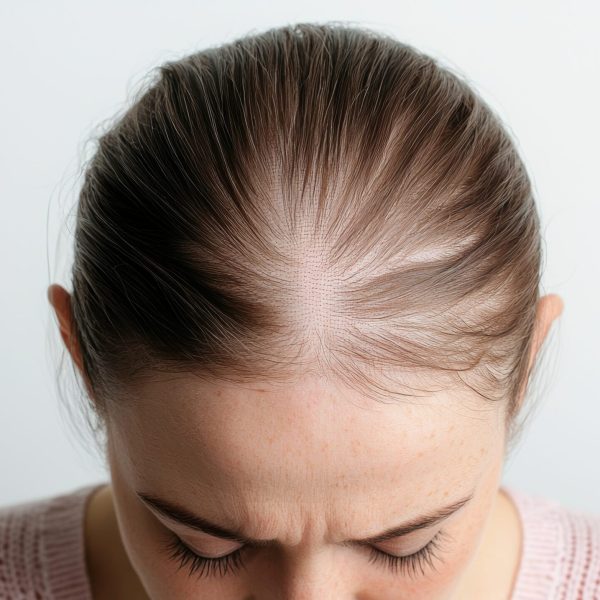
Hair-Loss Treatment
in 3 Easy Steps

Intake Form
Complete a quick online Intake Form

Provider Review
Price is all-inclusive:
Medication included
Free Consultation
No more in-office visits
No Face to Face/Video visit required!
Answers to questions and ongoing care, 100% online
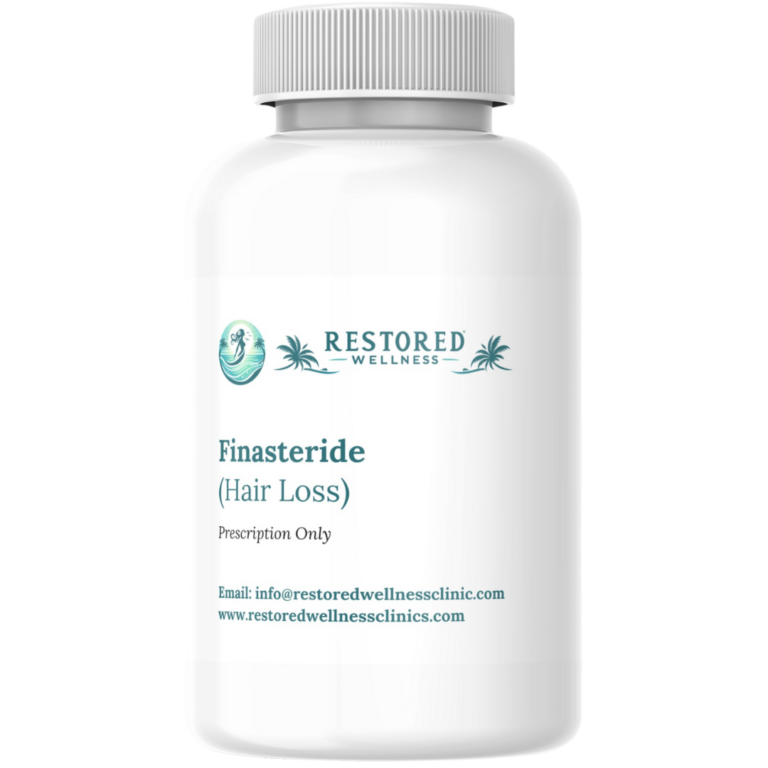
Medication
Provider will prescribe your preferred medication if medically appropriate
Free Shipping
Discreet packaging
*Prescription treatment requires an online consultation with a medical provider to determine if a prescription is appropriate. Actual product packaging may appear differently than shown
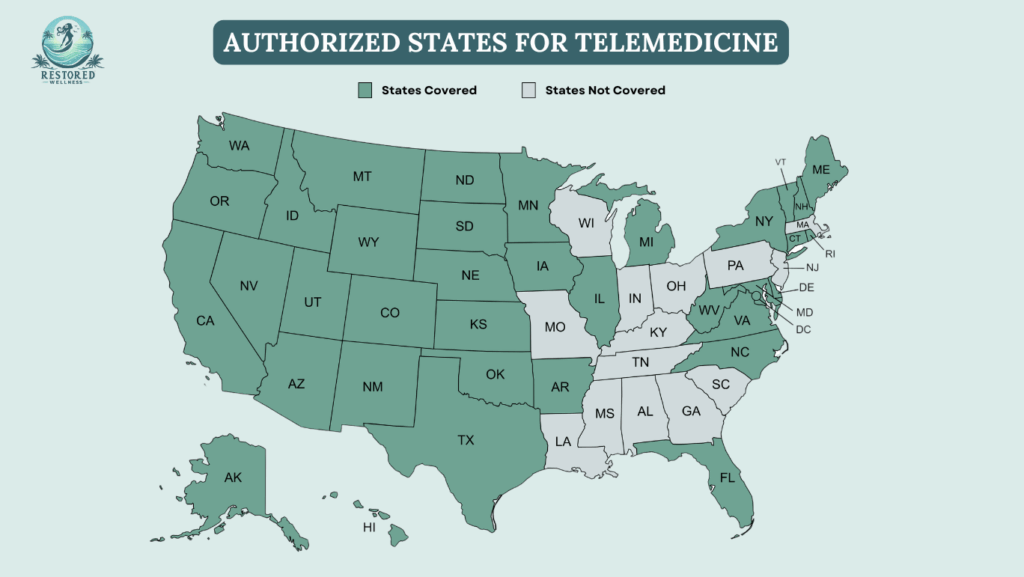
Hair Loss FAQ's
Please reach us at [email protected] if you cannot find an answer to your question.
- Genetic Factors: Conditions like male or female pattern baldness (androgenetic alopecia).
- Medical Conditions: Thyroid disorders, alopecia areata, or scalp infections.
- Hormonal Changes: Pregnancy, menopause, or hormonal imbalances.
- Nutritional Deficiencies: Lack of essential vitamins and minerals like iron or biotin.
- Stress or Trauma: Physical or emotional stress can cause temporary hair loss (telogen effluvium).
It depends on the cause:
- Genetic hair loss can be managed but is not completely reversible.
- Hair loss due to stress, nutrition, or medical conditions is often temporary and can improve with proper treatment.
There are several types of hair loss, each with distinct causes, patterns, and characteristics. Below is the most common type of hair loss that Restored Wellness can treat:
- Description: The most common type of hair loss, often referred to as male-pattern baldness or female-pattern baldness.
- Causes: It is largely hereditary and influenced by hormonal changes, specifically the hormone DHT (dihydrotestosterone), which shrinks hair follicles. Hair loss can also be caused by several medical conditions, including alopecia areata, telogen effluvium and trichotillomania, fungal infections, iron deficiency, certain thyroid issues, and even rapid weight loss. Alopecia areata causes the body’s immune system to attack its own hair follicles. This type of hair loss may be temporary or may need treatment if hair does not grow back. Stress, severe illness, or another traumatic event can cause a temporary hair loss condition called telogen effluvium. Typically, after the stress or shock is reduced, the hair will grow back. Trichotillomania is characterized by compulsive hair-pulling. This condition will last until sufficient mental health treatment is received.
- Pattern:
- Men: Hair loss begins at the temples and crown, eventually leading to a receding hairline and baldness.
- Women: Hair thinning usually occurs at the crown, with a widening of the part but rarely leads to complete baldness.
- Prevalence: Common in men and women, especially as they age.
Topical Dutasteride is a medication applied directly to the scalp to help treat hair loss. It works by blocking the conversion of testosterone to dihydrotestosterone (DHT), a hormone that contributes to hair thinning and male or female pattern baldness. By targeting DHT at the scalp level, topical Dutasteride can help slow hair loss and promote regrowth while potentially reducing the risk of systemic side effects compared to oral forms.
Topical Dutasteride can be used by men experiencing androgenetic alopecia (male pattern hair loss) who want to slow hair thinning and support regrowth. It’s generally suitable for:
Men with early to advanced stages of pattern baldness
Adults who prefer a topical treatment to potentially minimize systemic side effects compared to oral medication
It should only be used under the guidance of a qualified medical professional to ensure safety and appropriateness for each individual’s needs.
Topical GHK-Cu is a copper peptide compound applied to the skin or scalp for its regenerative and hair-supporting properties. GHK-Cu (Glycyl-L-Histidyl-L-Lysine Copper) is a naturally occurring peptide that binds to copper ions, promoting wound healing, collagen production, and tissue repair.
When used topically on the scalp, GHK-Cu may help:
Stimulate hair growth by improving blood flow and supporting follicle health
Strengthen existing hair strands
Reduce inflammation and create a healthier scalp environment
It’s often found in serums, sprays, or solutions and may be used alone or alongside other hair loss treatments.
Topical GHK-Cu can be used by adults experiencing hair thinning or hair loss who want to support hair growth and scalp health. It is generally suitable for:
Men and women with androgenetic alopecia (pattern hair loss)
Adults looking to strengthen existing hair and improve scalp condition
Individuals seeking a non-prescription, topical option for hair and skin rejuvenation
As with any treatment, it should be used according to the instructions provided and under the guidance of a healthcare professional if there are any concerns or underlying conditions.
Finasteride (men only): Blocks the conversion of testosterone to DHT, the hormone responsible for hair follicle shrinkage.
Minoxidil (oral, both men and women): Improves blood flow to hair follicles and stimulates hair growth.
Biotin: A vitamin supplement that supports healthy hair growth and strength, though its effectiveness for pattern baldness is limited.
Minoxidil: Applied directly to the scalp to stimulate hair growth and slow hair loss.
Finasteride (topical): Blocks DHT locally on the scalp with fewer systemic side effects compared to oral finasteride.
Azelaic Acid: May help reduce scalp inflammation and inhibit DHT activity.
Ketoconazole (shampoo or topical): Reduces scalp inflammation and dandruff; may also have mild anti-androgen effects that support hair growth.
- GHK-Cu: Works by delivering a copper-bound peptide to the scalp, which helps stimulate hair follicles, promote collagen production, and improve blood flow. This creates a healthier scalp environment, supporting stronger, thicker hair and potentially reducing hair loss.
- Minoxidil:
This medication works by extending the anagen, or growth phase, of hair and increasing the size of hair follicles. Initially, you may notice an increase in hair shedding as the medication promotes the shedding of telogen (resting phase) hairs, but this effect should resolve within 4-6 weeks of consistent use.Studies indicate that applying 5% topical minoxidil once daily for 24 weeks is well-tolerated and supports hair regrowth in male pattern hair loss, leading to improved scalp coverage and greater hair density.A topical treatment available as a foam or liquid, which stimulates hair growth and slows hair loss. *Also used Orally for Hair loss.
- Finasteride:
DHT is the primary factor behind male pattern hair loss. Finasteride works by inhibiting an enzyme in hair follicles that converts testosterone into DHT, thereby reducing DHT levels in the scalp. This treatment stops hair loss in 90% of patients, with 65% experiencing some hair regrowth while using finasteride. Ongoing use is essential to maintain these results.A prescription oral medication that works by inhibiting a hormone linked to hair loss in men. Often prescribed for male-pattern baldness. Oral Finasteride is FDA approved for hair loss treatment. *Also used Topically for hair loss.
*Oral Minoxidil and Topical Finasteride are not FDA approved for hair loss. While federal law allows the prescription of compounded drugs, they are not FDA-approved and do not undergo safety, effectiveness, or manufacturing review.
Men: Can use oral finasteride, oral minoxidil, topical minoxidil, topical finasteride, azelaic acid, and ketoconazole.
Women: Can use oral minoxidil, biotin, topical minoxidil, azelaic acid, and ketoconazole. Oral finasteride is generally not recommended for women of childbearing potential due to risk of birth defects.
- Men and Women: Can use Topical GHK-Cu
While not all hair loss is preventable, you can reduce risk by:
- Maintaining a healthy diet.
- Avoiding harsh hair treatments or excessive styling.
- Managing stress effectively.
- Using gentle, sulfate-free shampoos.
Results last only as long as treatment continues. If medications are stopped, hair loss will gradually resume, usually within several months.
Yes, stress can trigger a condition called telogen effluvium, where hair prematurely enters the shedding phase. Reducing stress and improving lifestyle habits often resolves this type of hair loss.
Oral Finasteride: Sexual side effects (low libido, erectile dysfunction), mood changes (rare).
Oral Minoxidil: Swelling, increased body hair, low blood pressure.
Topical Minoxidil: Scalp irritation, dryness, itching, or unwanted facial hair (if applied incorrectly).
Azelaic Acid: Mild redness or irritation at the application site.
Ketoconazole: Scalp dryness or itching.
Biotin: Generally safe; may interfere with certain lab tests. We recommend to not exceed 5 mg of Biotin daily.
Most patients begin to notice improvement in 3–6 months, with optimal results at 12 months of consistent use. Early shedding may occur in the first few weeks — this is temporary and part of the hair growth cycle.
Yes. A healthy scalp environment supports better outcomes. Gentle shampoos, consistent sun protection, and avoiding harsh chemical treatments (bleaching, frequent coloring) can help maximize results.
If you experience severe side effects (swelling, dizziness, sexual dysfunction, severe scalp irritation).
If you see no improvement after 12 months of consistent use.
If you are pregnant, planning pregnancy, or breastfeeding (important for women on finasteride or oral minoxidil).
